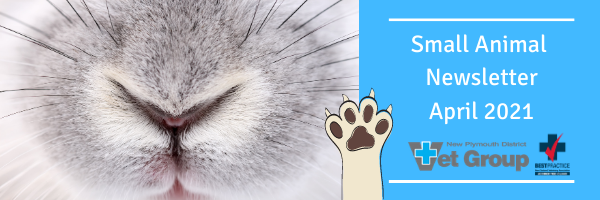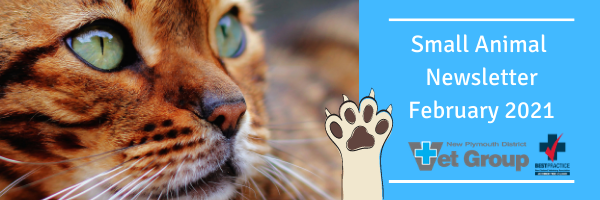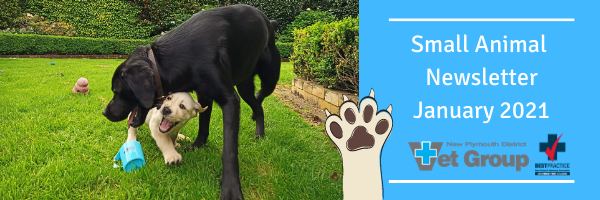We now offer Low Level Laser Therapy (LLLT also known as Photobiomodulation) Recently, we started offering…
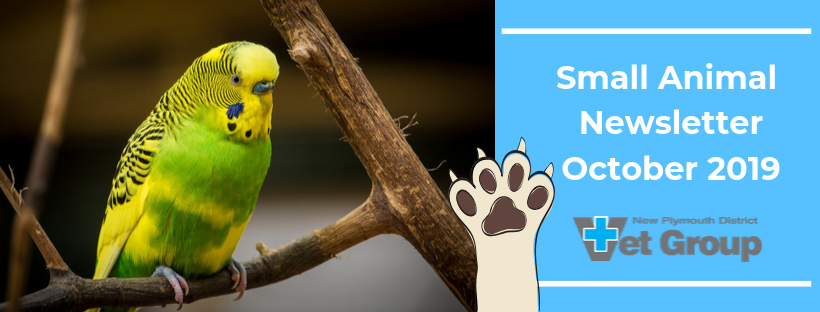
Small Animal Newsletter October 2019
Itching and scratching
This is the time of the year we start seeing an increasing amount of itchiness in dogs. This can be an annoying problem for pets and owners. We start seeing an increased amount of flea related issues and at this time of the year, the pollen count can trigger allergic reactions in sensitive dogs. Unlike people where the pollen allergies tend to manifest as hay fever, in dogs, it tends to present as itchy skin known as atopy. Grasses, dust mites, moulds, storage mites and dog yeast are also common allergens that cause atopic reactions.
There is no cure for allergic reactions, we can only manage it.
Other signs associated with atopy are:
- Itching
- Scratching
- Licking
- Rubbing
- Chewing – feet, groin, around the tail area, armpits, beck, ears, and face.
- Red skin/rash
When you know the triggers it becomes easier to try and avoid it however sometimes this is impossible when your dog is allergic to pollen.
Traditionally we used to prescribe steroids that would help calm the immune response but these can have potential side effects especially if used long term. We have safer treatment options available now and this includes Apoquel – a daily anti-itch tablet that doesn’t have the side effects that steroids can have, or Cytopoint, a canine monoclonal antibody against the enzyme that creates the itch, which is given as a monthly injection.
Other ways you can control the itch:
Diet – Good nutrition is key to helping manage pets with skin allergies. Feeding a high-quality diet that is specifically designed to help repair the skin barrier functions can be beneficial. Hills Science Diet Derm Defence or Royal Canin Skin Support are just some of the diets we recommend.
Flea Control – Using products like Nexgard, Bravecto or Simparica on a regular basis is essential when it comes to controlling skin issues. While some dogs can be allergic to fleas, in those who are not, one flea on an already itchy dog can send its itch into overdrive!
Shampooing – There is a range of medicated shampoo’s which can be prescribed to offer some relief.
Supplements – Feeding supplements which are high in Omega 3 oils and fatty acids such as Nutracoat can help reduce inflammatory signals that are released in response to allergies.
MMP for Cranial Cruciate Ligament Surgery
At the New Plymouth Vet Group, we have been offering this new modification of the TTA (tibial tuberosity advancement) procedure for the last 5 years and have performed the operation on over 200 cases.

Extra-articular stabilizations
A synthetic material is placed outside the knee and anchored to the bones on either side of the joint. A wide variety of fixation methods and locations are employed. The aim is to stabilize the joint against excessive movement and in the end, the scar tissue that forms around the joint provides the long term stabilization. This procedure called a lateral tie is now best used in small dogs and cats.
Tibial Osteotomy
These operations aim to change the mechanics of the joint by altering the shape of the tibia.
TPLO tibial plateau leveling operation was developed in the 1980s and TTA tibial tuberosity advancement was developed in 2002. It is widely accepted that the tibial osteotomy (bone-cutting) operations offer the best chance of a return to pre-injury levels of athletic activity, especially in larger or more active dogs. However, the original TPLO and TTA techniques are complex and costly.
Prices from Veterinary specialists may be between $5000 to $7000 dollars for a TPLO operation where the MMP procedure at New Plymouth Vet Group is around $3000 with good results.

We charge one fee that includes post-op revisits and so no hidden costs, but we are not orthopaedic specialists and have not undergone the years of training and examinations that allow this claim so if you would prefer we can arrange a referral for these surgeries to a specialist.
We have adopted a zero-pain philosophy for these operations, so we are using morphine preoperatively then once under a general anesthetic a constant rate infusion of ketamine is given intravenously during the surgery and local blocks are used before the dog is awake to keep everything comfortable post-op.
An epidural is performed once under anaesthetic. A spinal needle is used to administer morphine and local anesthetic around the nerves in the spinal cord dulling any sensation meaning that the anaesthetic can be kept to a minimum.
The operation is based on a technique developed almost 50 years ago for use in human knees by Dr Maquet, a Belgian orthopaedic surgeon. The operation works by redirecting the force generated by the large quadriceps muscles to compensate for the failed cruciate ligament. This is achieved by cutting free and moving forward, the front part of the tibia (the tibial tuberosity) attached to the quadriceps muscle.
The bone cut is called an osteotomy and the osteotomy is stabilized using a modern wedge-shaped orthopaedic implant made from material called Orthofoam. The pin and staple seen in the x-ray are used to hold the implant in place.
The porous titanium Orthofoam promotes remarkably rapid bone ingrowth and healing and this is key to the reduced resting time and minimal pain seen with MMP surgery.
Successful recovery after knee surgery, no matter which procedure has been used requires a period of controlled activity. Compared to other procedures MMP causes less discomfort and while a comfortable, pain-free patient is obviously a good thing, many dogs are tempted to use the operated leg too much, too soon.
No matter how comfortable and confident your pet is feeling in the days after their MMP operation it is absolutely essential that running, jumping, and general “rough and tumble” with other pets is avoided for the first 6 weeks or so.

The recovery period is outlined below:
First 2 weeks
Bandages are not used following MMP because it is important that your pet is able to flex and extend the operated knee freely right from day one. A light dressing may be placed over the incision. The skin sutures are removed 10 days after surgery.
During the first 14 days
Your pet should be encouraged to take frequent short leash walks, 5 -10 minutes six or eight times daily is a good starting point. It is important that the operated knee joint is returned to use as quickly as possible – concentrate on walking relatively slowly as this will encourage the patient to use the leg. This is the dog’s physiotherapy post-surgery so it is vital that we get out and move around. Ideally, your dog should go outside ON A LEASH to the toilet during the first two weeks after surgery. Do not swim the dog. No other exercise is recommended for the first 14 days – it is important to not let your pet loose to run freely in the house, particularly up and downstairs.
Third and fourth weeks
The amount of activity can now be gradually increased but it is essential that the patient is still not allowed off the leash. Leash walks can be longer and faster though you need to take care to ensure that the patient continues to use the operated limb confidently at every step.
Fifth and sixth weeks
Check X rays are scheduled for the end of week four and these should confirm that the osteotomy is healing well. Bear in mind that although bone healing and remodeling will be progressing nicely, full strength will not be established for several more weeks. At this stage, the patient will be capable of frequent lengthy (30 minutes or more) leash walks and we will soon be introducing some free-running activity. The key to success is a program of gradually increasing activity. At first, the patient can be allowed off the leash towards the end of the last walk of the day – choose a quiet area with a good surface (a short cut grassy park is ideal) without dogs or other distractions that might encourage your pet to do too much too soon. Five minutes is enough for the first day off the leash. Subsequently, the amount of free running play and exercise can be increased gradually back towards normal pre-injury levels. Most dogs will be capable of full, unrestricted athletic activity within 12 weeks of their MMP operation. Some residual low-grade stiffness and lameness may still be seen at twelve weeks, but this will resolve completely over the subsequent month or two as the patient regains full fitness and muscle tone.
If you have any questions, please don’t hesitate to email info@npvet.co.nz
Dr Robert O’Connor BVSc
References:
- Orthomed publications
- An owner’s guide to MMP and the MMP handbook Owners discharge Information
Corn cobs and dogs
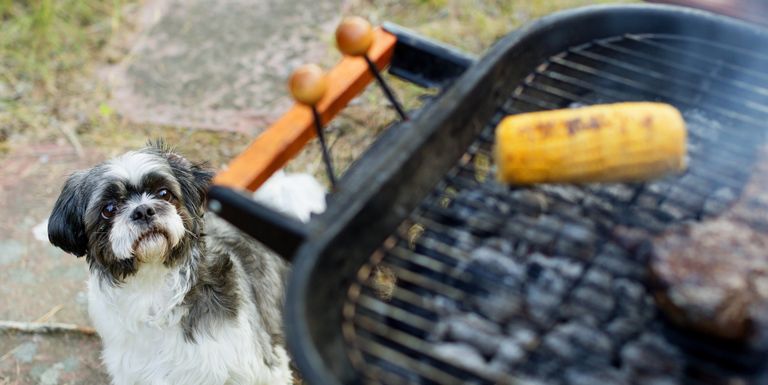 Many dogs love to chew on corn on the cob. They like the taste of salt, butter, and bits of corn. The cobs are also fun to chew. Some dogs chew up the cobs, while others don’t, treating them more as a chew toy than a snack. However, corn cobs pose a real and serious danger.
Many dogs love to chew on corn on the cob. They like the taste of salt, butter, and bits of corn. The cobs are also fun to chew. Some dogs chew up the cobs, while others don’t, treating them more as a chew toy than a snack. However, corn cobs pose a real and serious danger.While the corn itself is fine for your dog to eat, Your dog cannot digest the solid cob and if swallowed, it can cause an obstruction (blockage) in the intestine. Even small corn cobs or chewed pieces of the cob can cause an intestinal obstruction, a very serious (and potentially fatal) medical condition. These obstructions usually result in your dog having to have complicated surgery, requiring the vet to cut open the dog’s intestines to retrieve the offending corn cob.
Prevention is best when it comes to corn cobs so making sure when people are finished with them on their plate, they go straight into a rubbish/scrap bin which your dog has no access too!
Signs seen with intestinal obstruction or partial obstruction may include:
- vomiting or dry heaves,
- diarrhoea (or straining)
- not eating
- painful abdomen
- lethargic
If you suspect your dog may have swallowed or eaten a cob, please call us as soon as possible. The sooner the better and our vet can talk you through the best course of action.
Why does my cat eat grass?

Why do they vomit?
Cats are meat eaters, so when they eat grass they lack the required enzymes to break down the vegetable matters as a result they vomit. They do not want to vomit but it can actually help indigestible matter be removed from their digestive tract, making them feel better.
Is it okay for my cat to eat grass?
Grass contains folic acid, an essential vitamin for a cat’s bodily functions – so by snacking on grass they are actually enjoying a healthy green smoothie. Assisting in the production of haemoglobin, a protein that moves oxygen in the blood.
For those cats that struggle with hairballs (especially long-haired cats or extensive lickers) eating a little bit of grass goes a long way when clearing out their system. Eating grass can help fur balls move down the digestive tract and help them get to the other end.
TIP: Make sure your household plants are non-toxic as some cats will try and nibble on these. Some owners actually grow specific herb/grass patches for there cats in the garden. This can be helpful as it becomes an alternative to the outdoor grass which sometimes has been sprayed with pesticides, herbicides and other chemicals.
Transporting your Bird
At some time you may be faced with the task of transporting your bird. You may be taking the bird to the veterinarian, moving to a new residence or travelling long distances. In general, birds are great travellers. Most tolerate cars and aeroplanes very well and some actually love the excitement of travel. Planning ahead will ensure a safe, enjoyable trip for you and your bird.
What sort of container sh
If travelling by car, then all birds can be transported in a cage as long as it fits in the car. It is not safe for you or your pet to allow the bird to roam freely in the car while driving. You may wish to buy a small cage just for travel. Special pet carriers may be purchased from the pet store or your veterinarian. These carriers are usually rugged, conveniently sized for carrying, secure and comfortable for your pet. Small birds such as budgies, canaries or cockatiels may be put in a small box with small holes in the lid to provide air for short trips. The cover should be secured to prevent accidental escape.
Remember, many birds are capable of chewing their way out of the box. Toys and swings should be removed from the cage to prevent injury to the bird during rough trips. All containers should be secured in a c
What about bad weather?
You may still travel in bad weather. In cold weather, the car must be prewarmed and the cage or carrier covered well-using towels, blankets, duvets or jackets. In hot weather, the bird must have some ventilation or fresh air and should never be left unattended in the car. Even birds naturally from a hot climate can suffer heat stroke very quickly. Under no circumstances should the bird be exposed to draughts.
Staff Showcase
Shawna Wishart – Veterinarian

BVSc – Massey University
Our Instagram Superstar
‘Frankie’ belongs to one of our nurses and was recently visiting for his yearly checkup. Such a handsome guy!
Have you checked out our Instagram page yet? Updated daily – Meet our pet visitors and patients! Click here!




